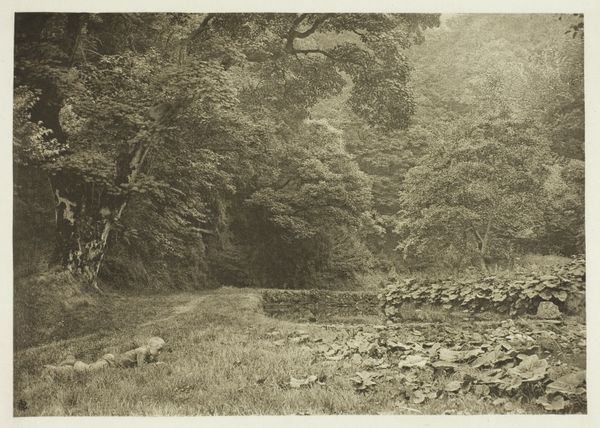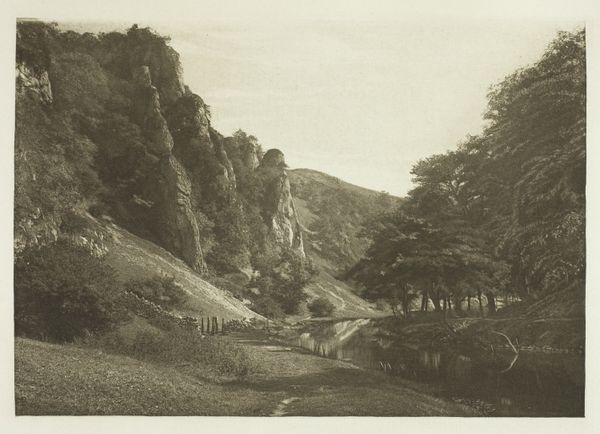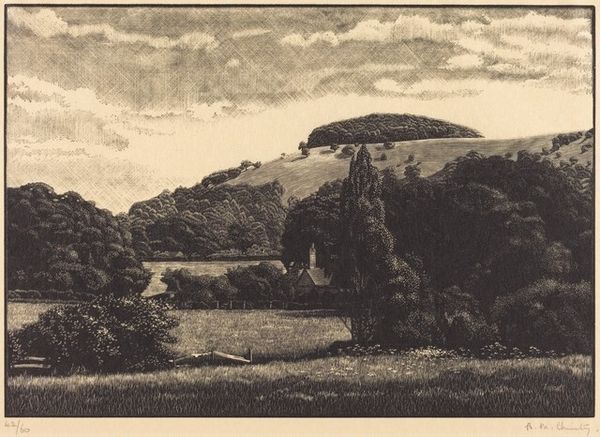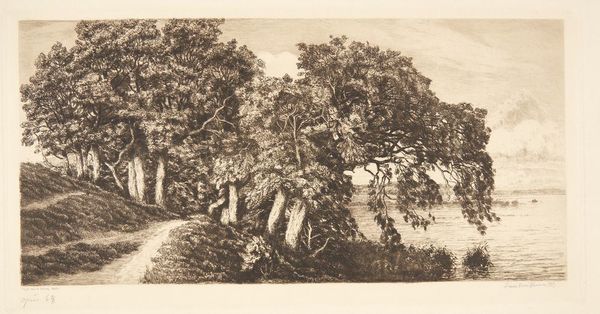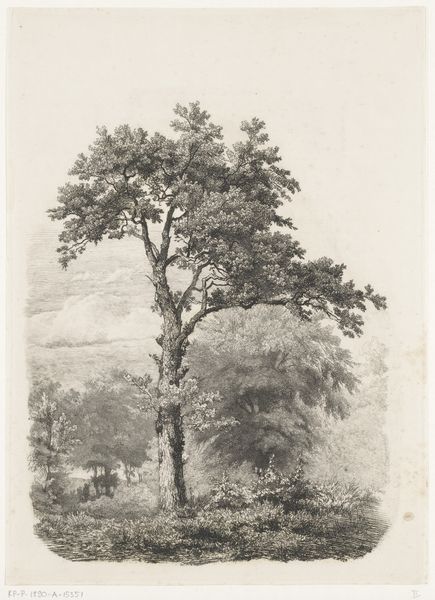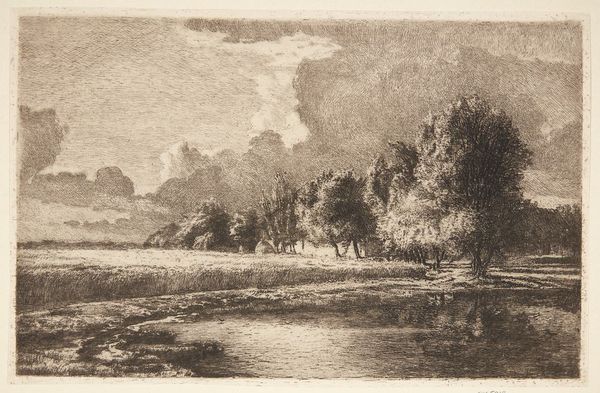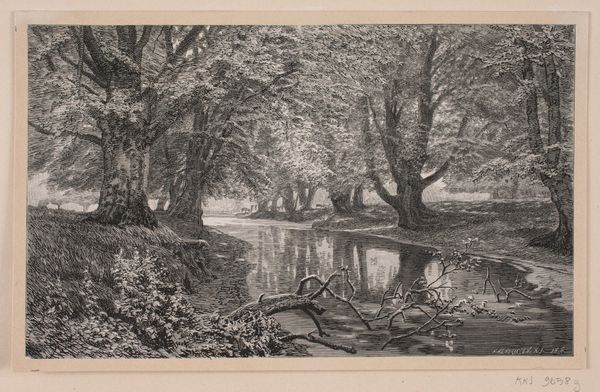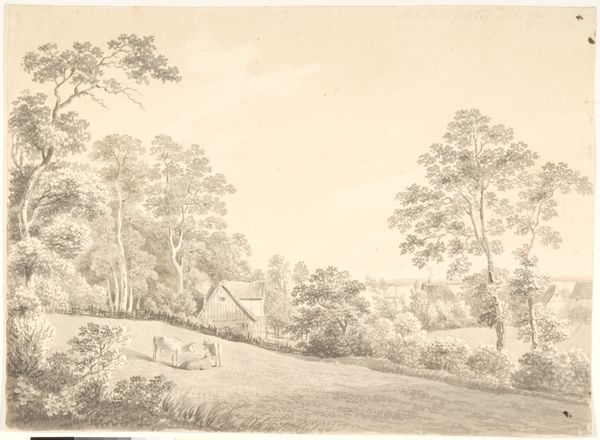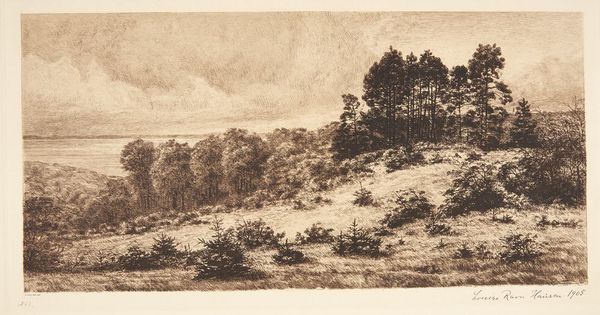
print, etching
# print
#
etching
#
landscape
#
romanticism
#
genre-painting
Dimensions: 9 x 10 5/8 in. (22.86 x 26.99 cm) (plate)11 1/8 x 13 7/16 in. (28.26 x 34.13 cm) (sheet)
Copyright: Public Domain
Editor: This etching from 1799 is entitled "Landscape with Cows" by Richard Cooper II and is here in the Minneapolis Institute of Art. I find the composition intriguing. It feels both pastoral and slightly claustrophobic. What are your thoughts, what do you see in this piece? Curator: Note how the artist uses the dense foliage of the tree as a framing device. It immediately directs the viewer's eye inwards to the herd. Consider also the contrast between the roughly textured foreground, achieved by intricate etching, and the comparatively smoother, more open space in the distance, hinting at depth. Editor: The use of light and shadow is really striking. What do you make of it? Curator: Precisely. The strong chiaroscuro effect is central to the visual experience. The dense hatching and cross-hatching techniques not only define form but also contribute to a pervasive mood of gentle solemnity. This interplay, together with the subdued tonal range, is instrumental in shaping our interpretation. The eye is drawn to pockets of brightness – a fleeting glimpse of sky, perhaps, or the pale coats of the cattle. Editor: That's a great point. I had noticed how bright the cows are in the landscape. They almost form a line that pulls you into the piece. What does that mean? Curator: The emphasis, rather, falls upon its formal resolution. That alignment and rhythm, it generates an inherent visual stability, an equilibrium. It would be imprudent to immediately leap towards metaphorical readings when the structure provides such richness in itself. Editor: That's a helpful perspective, looking at structure first and then symbolism. It seems I was putting the cart before the horse! Thank you. Curator: Indeed. Art demands disciplined looking. Now, go and practice your semiotic toolkit.
Comments
No comments
Be the first to comment and join the conversation on the ultimate creative platform.

